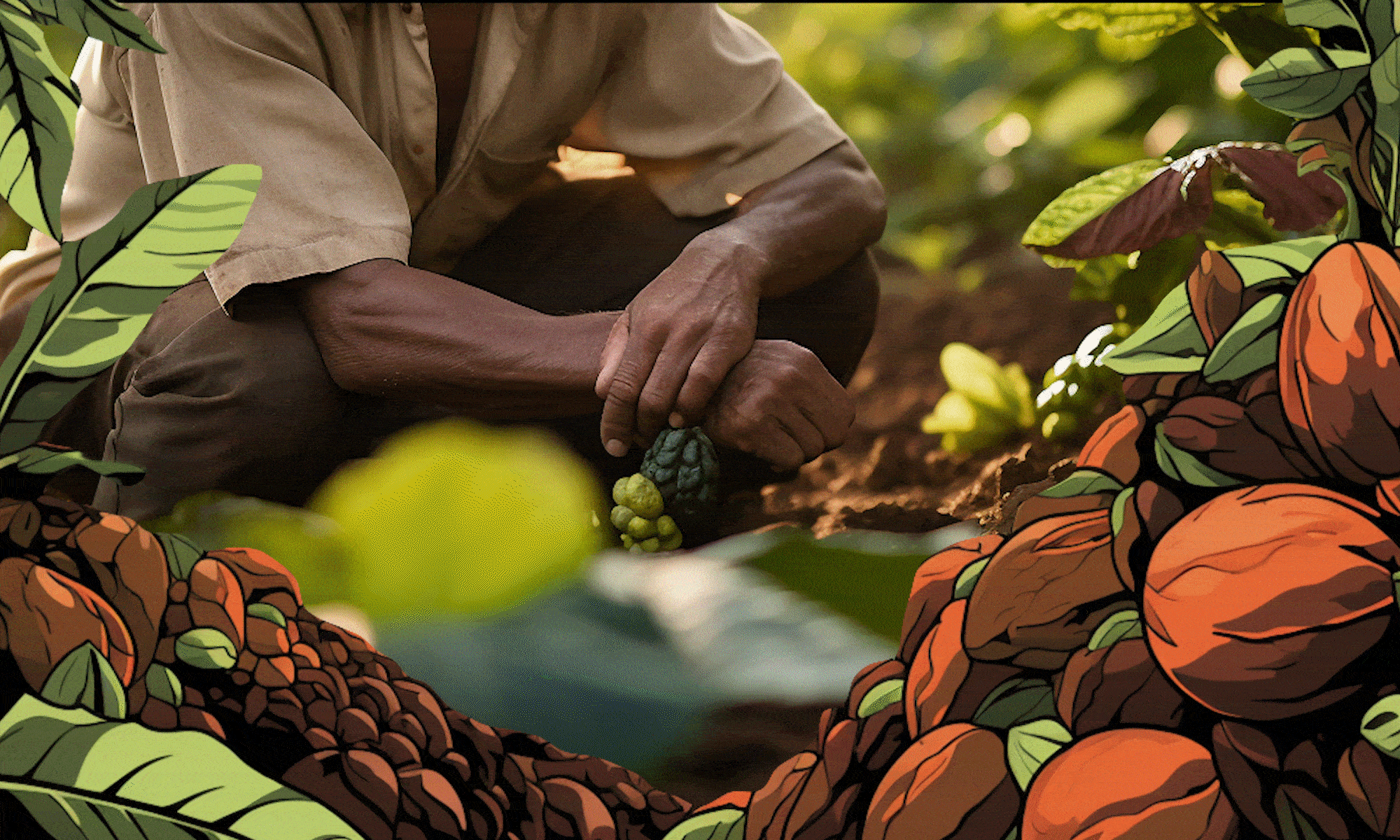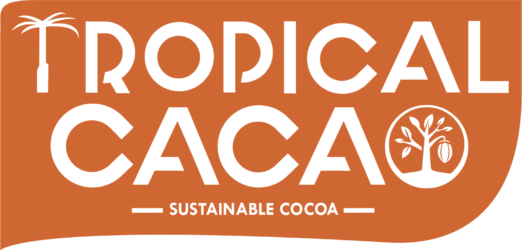As the global demand for chocolate continues to rise, the need for sustainable cacao farming has never been more urgent. With challenges such as climate change, deforestation, and aging farming populations, the future of cacao farming will rely heavily on technology and innovation to meet both environmental and economic demands. This article explores how emerging technologies and innovative practices are shaping the future of cacao farming, ensuring that it remains a viable industry for years to come.
The Current Challenges Facing Cacao Farming
Cacao farming is inherently vulnerable to various challenges that threaten the sustainability of the industry. The most pressing issues include:
- Climate Change and Extreme Weather
Rising temperatures, erratic rainfall, and more frequent droughts and floods are all having a direct impact on cacao production. As cacao trees require a stable tropical climate, climate change has altered growing conditions, leading to crop losses, lower yields, and decreased quality.
- Aging Farmer Populations
Many cacao farmers are aging, and younger generations are less inclined to pursue cacao farming due to its low profitability and labor-intensive nature. This demographic shift presents a significant challenge for the industry, as it faces a shrinking workforce.
- Deforestation and Land Degradation
Expanding cacao production often leads to deforestation, threatening biodiversity and contributing to soil degradation. Unsustainable farming practices are eroding the land, further decreasing its productivity and the long-term viability of cacao farming.
How Technology Is Transforming Cacao Farming
Despite these challenges, several cutting-edge technologies and innovative practices are emerging to help transform cacao farming and make it more sustainable. Here are some of the most promising developments:
- Precision Agriculture: Data-Driven Farming for Better Yields
Precision agriculture involves using advanced technologies such as sensors, drones, and satellite imagery to collect data about soil health, weather patterns, and crop conditions. By analyzing this data, farmers can make more informed decisions about planting, irrigation, fertilization, and pest control.
How It Works: Sensors placed in cacao fields can monitor factors like soil moisture, temperature, and nutrient levels. Drones can capture high-resolution images of the crop to detect early signs of disease or pest infestation. Satellite data provides real-time insights into weather patterns and environmental changes.
Benefits: Precision agriculture allows for targeted interventions, reducing waste and improving efficiency. It helps farmers increase yields, lower costs, and optimize their use of resources, all of which contribute to more sustainable farming practices.
- Drones for Monitoring and Maintenance
Drones are becoming increasingly popular in cacao farming for monitoring crop health, assessing growth, and even distributing fertilizers and pesticides.
How It Works: Drones equipped with high-resolution cameras or multispectral sensors can fly over cacao plantations to gather data about the health of trees, monitor pest infestations, and check for water stress.
Benefits: Drones provide a cost-effective way to monitor large farms quickly and accurately, helping farmers take proactive measures to protect their crops and boost productivity.
- Blockchain for Transparency and Fair Trade
Blockchain technology is revolutionizing supply chain management by providing transparency and traceability. In the cacao industry, blockchain can ensure that cacao beans are ethically sourced and that farmers are paid fairly for their labor.
How It Works: Blockchain allows for the secure tracking of cacao beans from the farm to the consumer, recording every step of the supply chain. This ensures that cacao is traceable and that farmers receive fair compensation.
Benefits: Blockchain helps increase trust between farmers, buyers, and consumers, promoting ethical sourcing practices and fair trade. It can also help reduce fraud and ensure that the cacao supply chain is transparent and sustainable.
- Agroforestry: Combining Cacao with Sustainable Land Practices
Agroforestry involves integrating cacao trees with other types of vegetation, such as shade trees, fruit trees, and even crops like coffee. This approach not only helps protect the cacao trees but also enhances biodiversity and soil health.
How It Works: Agroforestry systems create a more natural environment by mixing different plants and trees on the same farm. This helps maintain soil fertility, reduce erosion, and protect the cacao trees from extreme weather.
Benefits: Agroforestry provides farmers with diversified income streams by allowing them to grow other crops alongside cacao. It also contributes to environmental conservation and can make cacao farms more resilient to climate change.
- Gene Editing for Disease Resistance
Gene editing technologies, such as CRISPR, are being explored as a way to create cacao varieties that are resistant to diseases such as black pod disease and cacao swollen shoot virus, which are major threats to cacao production.
How It Works: Gene editing allows scientists to make precise changes to the genetic makeup of cacao trees, making them more resistant to pests, diseases, and climate stress.
Benefits: By developing disease-resistant cacao trees, gene editing could help reduce crop losses and improve the sustainability of cacao farming. It also reduces the need for chemical pesticides, which can be harmful to both the environment and farmers.
The Role of Sustainable Farming Practices in the Future of Cacao
In addition to technological innovations, sustainable farming practices are key to ensuring that cacao production remains viable in the long term. Here are some examples of sustainable practices that can shape the future of cacao farming:
- Soil Conservation
Healthy soils are essential for successful cacao farming, and farmers can implement soil conservation practices to reduce erosion and improve soil fertility. Techniques such as mulching, crop rotation, and planting cover crops help maintain healthy soils.
Benefits: These practices not only improve yields but also protect the land from degradation, ensuring that cacao farms remain productive for years to come.
- Water Management
With climate change affecting rainfall patterns, efficient water management is crucial. Cacao farmers can adopt rainwater harvesting systems, drip irrigation, and other water-efficient technologies to optimize water usage.
Benefits: Water management helps ensure that cacao trees have access to sufficient water during dry periods while reducing the risk of flooding during heavy rainfall.
- Integrated Pest Management (IPM)
IPM is a sustainable approach to controlling pests and diseases without relying on harmful chemicals. It involves using a combination of biological, cultural, and mechanical methods to prevent pest infestations.
Benefits: IPM reduces the environmental impact of farming and protects the health of farmers and consumers by minimizing pesticide use.
How Tropical Cacao Is Leading the Way in Sustainable Cacao Farming
At Tropical Cacao, we are committed to integrating technology and sustainable practices to help cacao farmers navigate the challenges of the future. Our initiatives include:
Supporting Agroforestry: We promote the use of agroforestry to enhance biodiversity and protect cacao trees from extreme weather.
Investing in Technology: We help farmers adopt precision agriculture techniques and use drones for monitoring crop health and increasing productivity.
Encouraging Sustainable Farming: We provide resources and training to farmers on soil conservation, water management, and pest control.
By combining technology and sustainability, we are helping to create a more resilient cacao industry that can thrive in the face of challenges like climate change.
Conclusion
The future of cacao farming lies in the integration of technology and sustainable practices. From precision agriculture to blockchain transparency and gene editing, innovations are transforming the way cacao is grown and traded. By adopting these technologies and practices, the cacao industry can ensure that cacao farming remains profitable, sustainable, and resilient to future challenges. At Tropical Cacao, we are dedicated to supporting these efforts and helping farmers adapt to the changing landscape of cacao production.
Visit Tropical Cacao to learn more about how we are shaping the future of cacao farming and promoting sustainability in the cacao industry.

